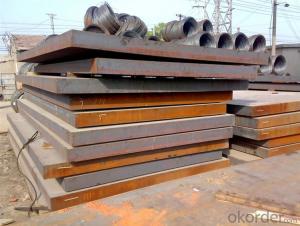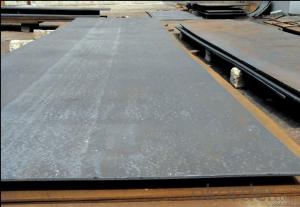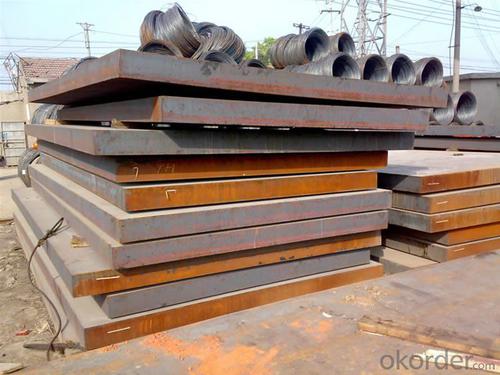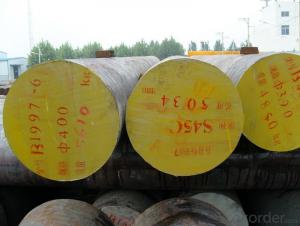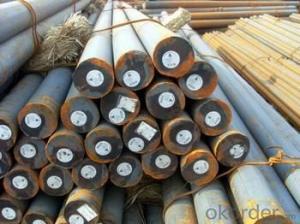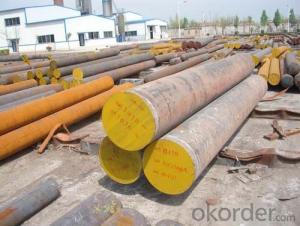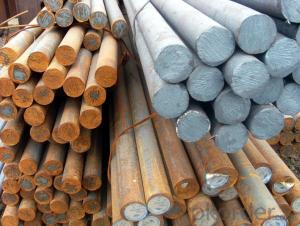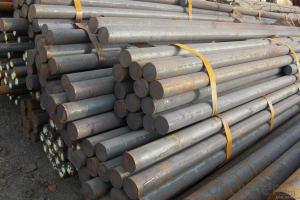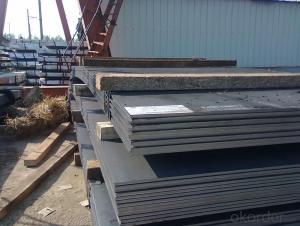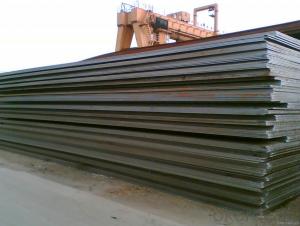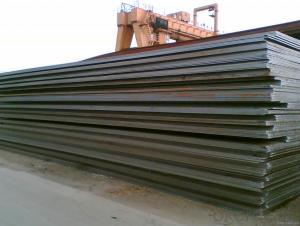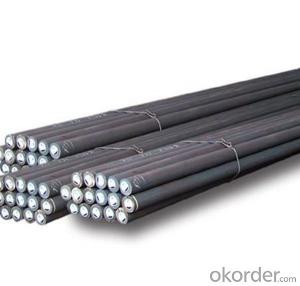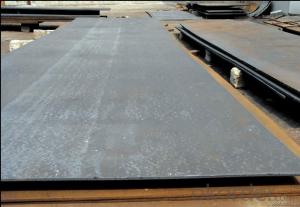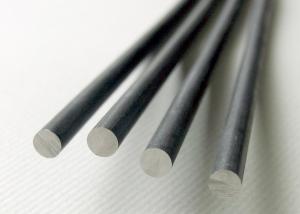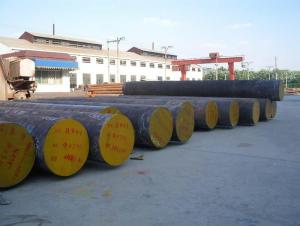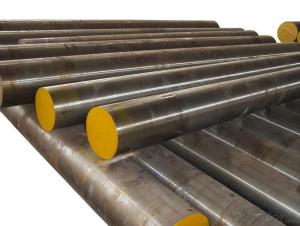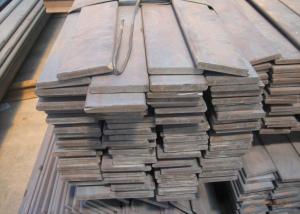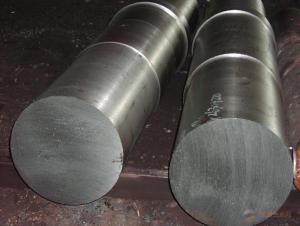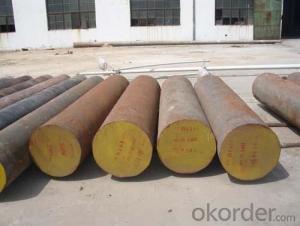Special Steel SKD11 Cold Working Die Steel Plate
- Loading Port:
- China main port
- Payment Terms:
- TT OR LC
- Min Order Qty:
- 25 m.t.
- Supply Capability:
- 10000 m.t./month
OKorder Service Pledge
OKorder Financial Service
You Might Also Like
Specification
The details of our Steel
1. Produce Standard: as the GB, AISI, ASTM, SAE, EN, BS, DIN, JIS Industry Standard
2. Produce processes: Smelt Iron -EAF smelt Billet - ESR smelt Billet -Hot rolled or forged get the steel round bar and plate
3. Heat treatment:
Normalized / Annealed / Quenched+Tempered
4. Quality assurance:
All order we can received Third party inspection, You can let SGS, BV,.. and others test company test and inspect our products before Goods shipping.
Product information
Chemical Composition(%)
Country | Standard | C | Si | Mn | Cr | Mo | V | S | P | Other |
China(GB) | Cr12Mo1V1 | 1.40-1.60 | ≤0.60 | ≤0.60 | 11.0-13.0 | 0.70-1.20 | ≤1.10 | ≤0.030 | ≤0.030 | Co≤1.00 |
USA(ASTM) | D2 | 1.40-1.60 | 0.30-0.50 | 0.30-0.50 | 11.0-13.0 | 0.70-1.20 | 0.8 | ≤0.025 | ≤0.025 | Co:0.60 |
Germany(DIN) | 1.2379 | 1.50-1.60 | 0.10-0.40 | 0.15-0.45 | 11.5-12.5 | 0.60-0.80 | 0.90-1.10 | ≤0.030 | ≤0.030 | - |
Japan(JIS) | SKD11 | 1.40-1.60 | ≤0.40 | ≤0.60 | 11.0-13.0 | 0.80-1.20 | 0.20-0.50 | - | - | Ni≤0.50 |
Available Size
Rolled flat steel | 12-90mm×205-610mm×L |
Forged flat steel | 100-300mm×400-600mm×L |
Applications: suitable for various complicated cold working dies with high precision and long lifetime,such as punching dies,cold extrusion dies,thread rolling dies,screw plates,cold extrusion dies,and precise measuring devices
Product show
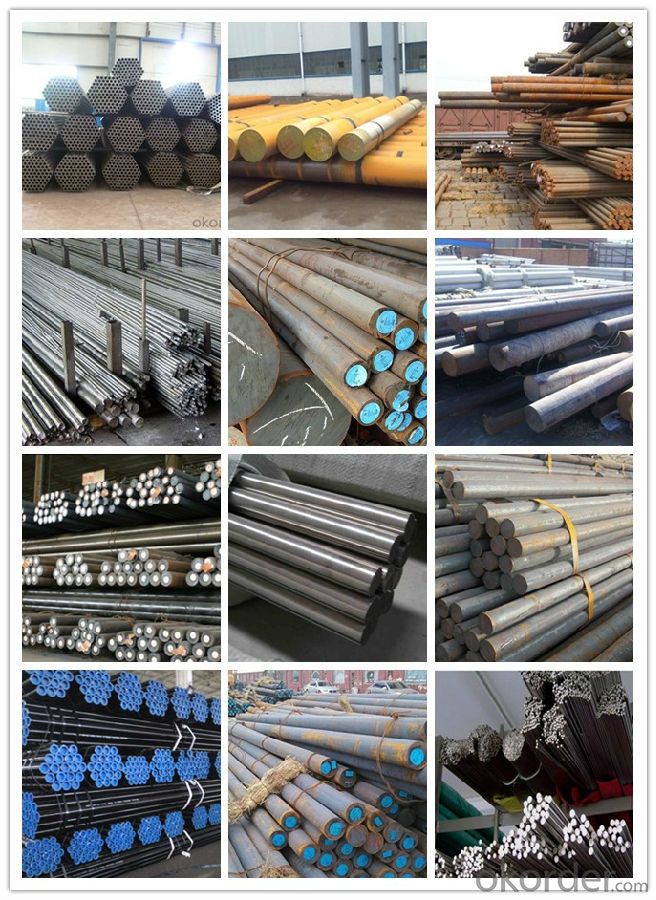
Workshop show
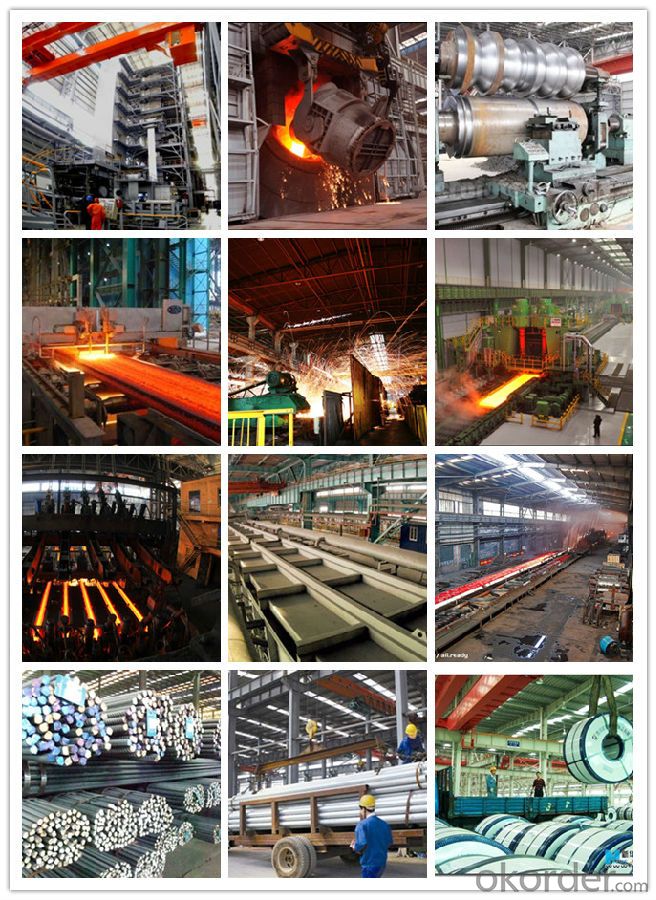
- Q: Can special steel be used in the battery manufacturing industry?
- Yes, special steel can be used in the battery manufacturing industry. Special steel, such as stainless steel or nickel-plated steel, can be used for battery casings, terminals, and other components due to its durability, corrosion resistance, and electrical conductivity properties.
- Q: What are the requirements for special steel used in low-temperature applications?
- Special steel used in low-temperature applications must meet certain requirements to ensure its performance and reliability in such conditions. These requirements primarily revolve around three key factors: toughness, resistance to brittle fracture, and corrosion resistance. Toughness is of utmost importance in low-temperature applications because it determines a material's ability to absorb energy and resist cracking or fracturing. Special steel for low-temperature applications should have high toughness, which is typically achieved through the addition of certain alloying elements such as nickel and manganese. These elements enhance the steel's ability to withstand impact loads and prevent catastrophic failures. Resistance to brittle fracture is another crucial requirement for steel used in low-temperature environments. At low temperatures, steel becomes more susceptible to brittle fracture, which can occur without any significant deformation or warning. To mitigate this risk, special steel for low-temperature applications undergoes specific heat treatment processes to refine its microstructure and improve its resistance to brittle fracture. Corrosion resistance is also an essential requirement for special steel used in low-temperature applications. Low temperatures can often lead to the formation of ice or condensation, which can introduce moisture and potentially corrosive substances to the steel's surface. Therefore, the steel must have excellent corrosion resistance properties to prevent degradation and maintain its structural integrity over time. This is commonly achieved through the addition of corrosion-resistant elements such as chromium and molybdenum. In addition to these primary requirements, other factors such as dimensional stability, weldability, and cost-effectiveness should also be considered when selecting special steel for low-temperature applications. The material should have good dimensional stability to ensure it retains its shape and mechanical properties under varying temperature conditions. It should also be easily weldable to facilitate construction and maintenance processes. Moreover, the selected steel should be cost-effective, balancing its performance with the overall project budget. Overall, special steel used in low-temperature applications must possess high toughness, resistance to brittle fracture, and corrosion resistance. Meeting these requirements ensures the steel's reliability and longevity in challenging low-temperature environments, allowing for safe and efficient operation in various industries such as cryogenic storage, oil and gas exploration, and transportation.
- Q: Can special steel be used in medical applications?
- Indeed, medical applications can utilize special steel. Known as stainless steel, special steel is extensively employed in the medical field due to its distinctive qualities and benefits. Its resistance to corrosion is exceptionally high, a crucial aspect in medical settings where exposure to bodily fluids and sterilization procedures is prevalent. Moreover, special steel is biocompatible, meaning it does not trigger adverse reactions upon contact with human tissues or fluids. Consequently, it finds suitability in numerous applications, including surgical instruments, orthopedic implants, dental equipment, and medical devices. The adaptability of special steel allows it to be molded into various forms, ensuring its utilization for diverse medical purposes. Furthermore, its strength and durability contribute significantly to its effectiveness in medical applications, providing dependable and long-lasting tools and equipment. Additionally, special steel can endure high temperatures, making it appropriate for autoclaving and other sterilization methods. In conclusion, the properties of special steel make it an exceptionally fitting material for medical applications, guaranteeing the safety, efficacy, and endurance of medical equipment and devices.
- Q: What are the cost implications of using special steel?
- Using special steel can have significant cost implications. Special steels are often more expensive compared to standard steels due to their specific properties and manufacturing processes. The cost of special steel can vary depending on factors such as the alloy composition, production techniques, and market demand. Additionally, using special steel may require specialized tools, equipment, and skilled labor, which can further increase the overall cost. However, it is important to consider the long-term benefits and potential cost savings that can be achieved by using special steel, such as improved durability, corrosion resistance, and enhanced performance in specific applications.
- Q: What are the different surface protection methods used for special steel?
- To enhance the durability and resistance of special steel, several methods of surface protection are employed. Galvanizing is a commonly utilized technique, wherein a layer of zinc is applied to the steel surface. This shields the steel from corrosion and rusting, thereby prolonging its lifespan and preserving its appearance. Galvanizing can be executed through either hot-dip galvanizing or electroplating, depending on the specific requirements of the steel. Another method is powder coating, which entails the application of a dry powder to the steel surface, followed by curing at high temperatures. This results in the formation of a protective layer that is impervious to chipping, scratching, and fading. Powder coating is often chosen for its aesthetic benefits, as it offers a wide range of color options and can enhance the visual appeal of the steel. Furthermore, various types of paints and coatings can be employed to protect special steel. These coatings can be applied using a spray or brush technique, and they serve as a barrier against corrosion, chemicals, and UV radiation. Depending on the specific needs and environmental conditions, epoxy, polyurethane, and acrylic coatings are frequently utilized. Moreover, stainless steel possesses inherent resistance to corrosion due to its composition. However, to further safeguard it, passivation can be employed. Passivation involves a chemical treatment that eliminates iron particles from the surface, thus preventing corrosion and improving the steel's resilience against staining and pitting. Lastly, a layer of ceramic or enamel coating can be applied to protect special steel. These coatings offer high levels of resistance to heat, chemicals, and physical abrasion. They can be applied through spraying or dipping and are commonly used in environments where the steel will be exposed to extreme conditions or aggressive substances. In conclusion, the various surface protection methods utilized for special steel encompass galvanizing, powder coating, painting, passivation, and ceramic/enamel coating. These methods aim to enhance the steel's durability, corrosion resistance, and overall lifespan, ensuring that it can withstand diverse environmental factors while maintaining its structural integrity.
- Q: What are the different types of special steel?
- There are several types of special steel, including stainless steel, tool steel, high-speed steel, carbon steel, alloy steel, and maraging steel. These different types of special steel are designed to possess specific properties and characteristics that make them suitable for various applications across industries such as construction, automotive, aerospace, and manufacturing.
- Q: How does the carbon content affect the properties of special steel?
- The carbon content in special steel plays a crucial role in determining its properties. The addition of carbon to steel alters its microstructure and influences various mechanical and physical properties. The primary effect of carbon content is on the hardness and strength of the steel. Increasing the carbon content in special steel leads to an increase in its hardness. This is because carbon atoms occupy the interstitial sites in the iron lattice, which creates a distortion in the crystal structure, making it more resistant to deformation. Higher carbon content also results in a greater martensitic transformation during heat treatment, which further enhances the hardness of the material. Furthermore, the strength of special steel is significantly influenced by carbon content. Higher carbon levels lead to increased strength due to the formation of stronger and more numerous carbide precipitates. These carbides act as obstacles to dislocation movement, making it more difficult for the steel to deform under load. However, it is important to note that the increase in carbon content also comes with some trade-offs. As the carbon content rises, the ductility of the steel decreases. This means that the material becomes less able to deform without fracturing. High carbon content can make the steel brittle, reducing its toughness and impact resistance. In addition to hardness and strength, carbon content affects other properties of special steel. It influences the steel's wear resistance, as higher carbon content leads to the formation of harder carbides that can resist wear and abrasion. Carbon also affects the steel's machinability, with higher carbon content making the material more difficult to machine due to increased hardness. In conclusion, the carbon content has a significant impact on the properties of special steel. It affects the hardness, strength, ductility, toughness, wear resistance, and machinability of the material. Therefore, careful consideration of the desired properties and application requirements is necessary when determining the appropriate carbon content for special steel.
- Q: How does special steel contribute to the aerospace defense industry?
- Special steel contributes to the aerospace defense industry by offering exceptional strength, durability, and corrosion resistance. It is used in the manufacturing of critical components, such as engine parts, landing gears, and structural elements, ensuring the safety and reliability of aircraft and defense systems. The high-performance properties of special steel enable the production of lighter aircraft, improving fuel efficiency and overall performance. Additionally, its ability to withstand extreme conditions and maintain structural integrity makes it crucial for military applications, including missile systems and armored vehicles.
- Q: Can special steel be used in the wastewater treatment industry?
- Yes, special steel can be used in the wastewater treatment industry. Special steel, such as stainless steel or corrosion-resistant alloys, is often utilized in the construction of equipment and infrastructure used in wastewater treatment plants. These materials offer high resistance to corrosion, chemicals, and harsh operating conditions, ensuring durability and longevity in wastewater treatment processes. Additionally, special steel's hygienic properties make it suitable for applications where cleanliness and sterilization are crucial.
- Q: How is special steel used in the aerospace supply chain?
- Special steel is used extensively in the aerospace supply chain due to its exceptional strength, durability, and resistance to extreme temperatures. It is utilized in various components such as engines, landing gears, structural frames, and fasteners. The unique properties of special steel enable aircraft to withstand high stress and harsh operating conditions, ensuring safety and reliability in the aerospace industry.
Send your message to us
Special Steel SKD11 Cold Working Die Steel Plate
- Loading Port:
- China main port
- Payment Terms:
- TT OR LC
- Min Order Qty:
- 25 m.t.
- Supply Capability:
- 10000 m.t./month
OKorder Service Pledge
OKorder Financial Service
Similar products
Hot products
Hot Searches
Related keywords
